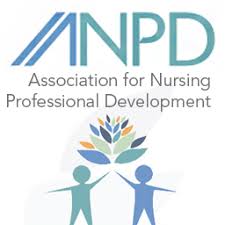Of all the specialty nursing practices, a nursing professional development (NPD) practitioner is one that allows nurses to help other nurses advance while also retaining the bedside work that’s so important.
This week is Nursing Professional Development Week, and the timing offers a chance to recognize what these practitioners do and how it helps advance the nursing profession.
Nursing professional development practitioners have a range of duties, says Mary Harper PhD, RN-BC, and the Association for Nursing Professional Development’s director of nursing professional development. Whether they are assisting nurses at bedside with a procedure or on-boarding new nurses in an organization, the work they do has the common goal of improved patient care.
The career offers a role that Harper explains has the following seven distinct responsibilities:
- partner for practice transitions
- learning facilitator
- change agent
- mentor
- leadership
- champion of scientific inquiry
- advocate for the the nursing professional development practitioner practice
NPD practitioners are hands-on when it comes to helping new nurses adjust to a job, training a unit on better practices, or advancing the skills of a nurse transitioning to a management role. Their role within an organization (sometimes called a clinical nurse educator or learning consultant and generally operating out of the organization’s education department), is one that continually advances how things are done.
The nursing professional development practitioner also has an outward facing role as well. They are in charge of developing cooperative relationships with academics and with members of other professional community organizations. They research evidence-based practices and quality improvement to ensure the best possible care and treatment for patients.
Harper says sometimes nurses assume the role would remove them from direct patient care, but she says that’s not the case. There are many times when the nursing professional development practitioner works with staff at a patient’s bedside to help them improve practices. They still have the direct interaction while also having a chance to work with nursing staff as well. Even more important is that they are teaching skills that will directly, and often very quickly, help patients.
“Growth within nurses leads to organizational change,” she says. “We really influence these things. Our goal is always that the patients receive optimal care.”
If you are interested in a career as a nursing professional development practitioner, becoming a preceptor is the best first step, says Harper. Many in the field have an MSN degree with a focus in education. While that isn’t required, working toward that goal will equip you with the skills you’ll use frequently. Dual certification as a NPD practitioner and in another specialty can only help you.
Just because a nurse has excellent skills, doesn’t mean those skills are what’s necessary for a NPD role. “You can be a very competent nurse, and you are thrust into this role where you don’t know how to do a needs assessment or measure the outcome of what you have done,” she says. “We find it’s really important for NPD practitioners to have change management and leadership to fulfill that role.” Training for the role boosts both your nursing skills and your leadership skills.
You can also reach out to your organization’s education department and ask to get involved, says Harper. For example, if you find some of the staff is having trouble starting an IV and you are the best nurse at starting an IV on the floor, you can offer to help put together a training plan for improving the process. “It’s a great way to get recognized,” Harper says.
“This is a distinct specialty with its own specialty skills,” she says. This week, celebrate the nurses who are in this varied and busy role.
- Is the FNP Program Right for You? - April 24, 2024
- WOC Nurses Week Highlights Specialty - April 16, 2024
- Honoring Radiology Nurses Day on April 12 - April 12, 2024



